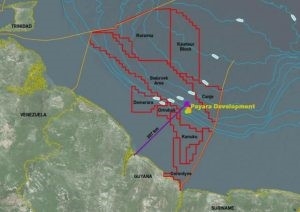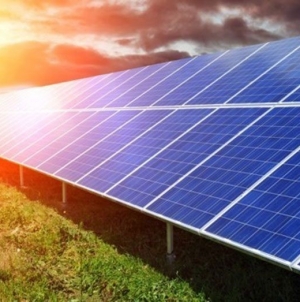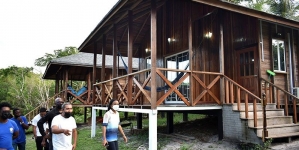Allowing Payara to go forward would be economically and environmentally disastrous for Guyana – German NGO
Even as the administration of the People’s Progressive Party/Civic (PPP/C) continues its assessment of the Field Development Plan (FDP) for ExxonMobil’s Payara project in the Stabroek Block, some industry experts hold the firm view that granting approval at this point in time, would only spell economic and environmental disaster for Guyana.
Specifically noting this concern with Kaieteur News recently was German non-governmental organization, Urgewald.
According to the group, its conviction is premised on the fact that there are gaping fiscal loopholes in the Stabroek Block Production Sharing Agreement (PSA) that would rob Guyana of what it deserves for the exploitation of its resources.
It said, too, that ExxonMobil’s Environmental Impact Assessment for Payara (EIA) also holds its fair share of weaknesses that if left unaddressed, would leave Guyana in a most vulnerable position.
To expound on the first pillar of its argument, Urgewald reminded that the oil deal Guyana signed with Exxon states that it can recover 75 percent of the cost for the operations while the remaining 25 percent would be considered “profit oil” to be shared between Guyana and the Stabroek Block consortium.
When that 25 percent is divided, it works out to 12.5 percent for Guyana. Once the meagre two percent royalty is added, the total take climbs to 14.5 percent.

Urgewald also reminded that the International Monetary Fund (IMF), in its assessments of the deal, warned Guyana that ExxonMobil’s initial investments for Liza Phase One and Two would not be recovered until the late 2020s.
The NGO said it is important for readers to bear in mind that the projection of the late 2020s was given when oil prices ranged between $53 to $55 a barrel. With lower oil prices at least in the near-term, Urgewald stressed that the cost recovery phase will last longer, meaning Guyana will have to wait longer to see its 14.5 percent take increase.
To compound this bleak state of affairs for the country, Urgewald stated that ExxonMobil is now pushing for the Government of Guyana to give its blessings for another project to be developed. But the NGO stressed that this would only be good for ExxonMobil and bad for the people of Guyana.
Expounding further, Urgewald recalled that the IMF had pointed out in 2019, that the absence of ring-fencing provisions in Stabroek Block deal will further delay profits to the country. Commenting on this fiscal loophole, Urgewald said: “When a contract includes ring-fencing, it treats each oil field as a separate business entity and prevents adding the costs of developing a new oil field (Payara) to an oil field that is already producing oil (Liza One).”
The NGO added: “The Stabroek contract does not ring-fence the oil fields across the Stabroek block and allows ExxonMobil to keep piling on development costs for each new field – every new field that gets a permit delays Guyana from receiving the 50-50 share in “profit oil”.”
Heike Mainhardt, Senior Advisor at Urgewald, was keen to note that the 50-50 share for Guyana is quite low by international standards, and even without permitting Payara, the expert said that Guyana is already stuck with only 14.5 percent share for the next seven to 10 years.
The Urgewald advisor said: “This is a scam and permitting Payara would make this even worse. The World Bank and its consultants are enabling this scam on the people of Guyana and on the environment.”
The advisor stressed too that even Exxon’s Environmental and Social Impact Assessment for the project is well below international standards and Mainhardt’s colleague, Ute Koczy, Financial Campaigner at Urgewald, agreed implicitly.
In an invited comment, he said, “Approving Payara’s permit would not only spell disaster economically, but also environmentally. Exxon’s Environmental and Social Impact Assessment as well as their Management Plan are so below international standards that we must assume that coastal marine ecosystems with their protected species are at existential risk in Guyana.”
Koczy stressed that the Environmental and Social Impact Assessment for the Payara concession fails to carry out a study to determine the economic and social values of coastal-marine ecosystem services. If there are no agreed upon values assigned prior to a severe event, he opined that the oil companies can simply tie a government up in court for decades, as was the case for the Exxon Valdez spill thirty years ago in Alaska.
Further to this, Koczy said that the ESIA failed to conduct an inventory of birds and Red Listed International Union for Conservation of Nature (IUCN) aquatic species in Regions One and Two, where some of the most pristine bird and aquatic habitats are located, and where the country’s only coastal protected area has been declared.
Should any of Payara’s wells have a blowout, the NGO campaigner said that these wetlands will be severely impacted. Koczy said that this is a pattern that mirrors the ESIA’s for Liza Phase One and Two.
Koczy said too that Exxon has not identified the true impacts of their patented chemical dispersants, nor has it presented alternatives with little or no toxicity to the rich fisheries and nursery areas along the coast.
He is of the firm conviction that Exxon must explore these options instead of holding on to its toxic, patented dispersants which are still found in high concentrations in the Deepwater Horizon area.
Taking the foregoing into account, Urgewald cautioned that a rapid approval of Payara’s permit is to the detriment of Guyana while adding that no further permits should be approved for the Stabroek Block.






















